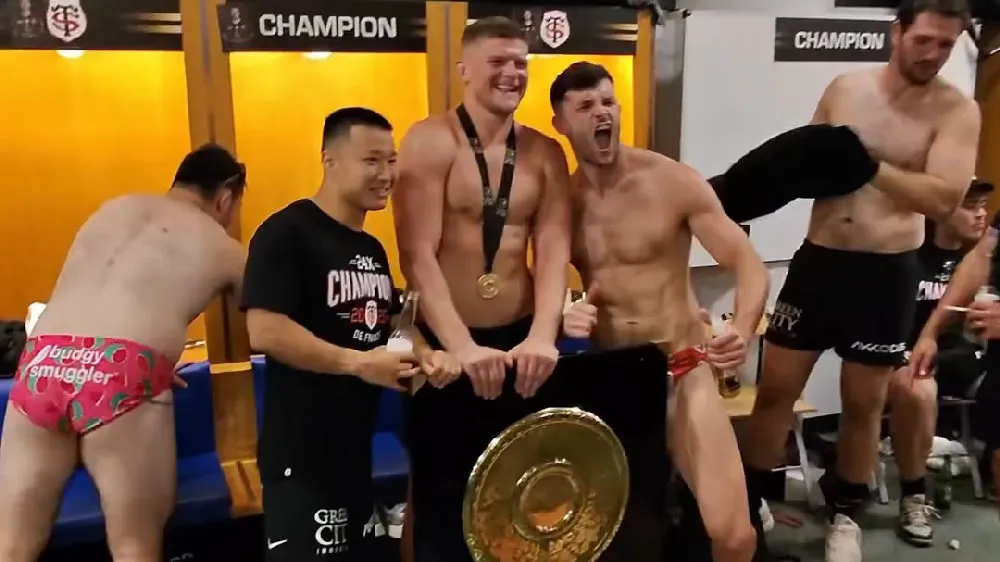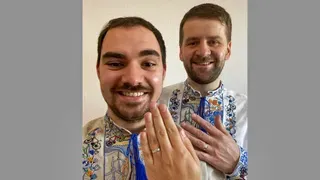May 30, 2021
How Canada's Queer Youth are Adapting to Virtual Communities
READ TIME: 5 MIN.
This article is republished from The Conversation
David J Kinitz, University of Toronto and Alan Santinele Martino, Carleton University
As academics who are part of a collaborative research team focused on the health inequities experienced by 2SLGBTQ+ people, we know that discrimination, mental distress and isolation are the everyday reality for many queer people internationally.
At the same time, it amazes us to witness the range of creative strategies deployed by queer communities in Canada and globally as we strive to maintain connection during this pandemic.
Queer people are showing, as famously sung by Tammi Terrell and Marvin Gaye (and by Diana Ross) that "ain't no mountain high enough" to keep us from each other.
Approaching Pride Month, we note both the challenges faced by queer students during the pandemic, and reflect on what queer theory and disability justice have to contribute to our awareness of the importance of staying connected for queer students.
Challenges for queer students
Measures in response to the COVID-19 pandemic have serious potential to adversely affect queer people's well-being and health. A study of how social distancing might affect gay, bisexual, queer, trans and two-spirit men in Canada notes that given that social support from friends, family and partners is a known protective factor against negative mental health outcomes among queer people, "social distancing may exacerbate negative mental health consequences."
Some queer students no longer have access to queer-friendly resources and social networks that the university campus once provided. Many found refuge in academic spaces, like student clubs and research groups and felt relief from newfound independence from family. In-person Pride events are also cancelled and events have gone digital.
Data suggests graduate students across Canada are having their mental health affected by the pandemic.
Graduate students who identify as sexual minorities may experience additional stressors associated with gender or sexuality-based and intersectional forms of oppression like racism, colonialism, sexism, classism and ableism, not to mention unequal effects of the pandemic on Black, racialized and low-income communities.
Unfortunately, the pandemic's public health response might mean returning to family environments where being "out" is not possible or safe.
Beyond this, many doctoral students face expectations of prioritizing studies over personal life to be highly competitive in a "publish or perish" mentality upon entering the academic job market – all despite the pandemic.
Chosen families
Queer people have a history of combating our unique challenges by re-imagining who is responsible for caring for one another. For example, queer people have learned to build and rely on "chosen families," ties composed of members outside of a person's biological and legal relationships, developed to survive amidst hetero-normative societies.
Queer people often have to "code switch" – change how we present ourselves and hide parts of our authentic selves – when sharing space with others in everyday life to pass as straight (or at least, "less gay"), including online socials and family obligations during the pandemic.
Our scholarship draws on queer theory to unsettle heterosexuality as a norm, to interrogate and disrupt varied ways we queer people encounter oppression and find ways to build solidarity. Disability justice also teaches us the value of interdependence, reminding us that no-one can make it on their own.
Finding ways of staying connected
Queer graduate students are harnessing the potential of digital technologies and finding ways to express themselves, access support networks and retain a sense of belonging. Queer people are having to recreate the essence of lost safe physical spaces through virtual means that are unique from the countless Zoom calls and Jackbox Games nights everyone seems to be having.
In our own experiences entering the pandemic as queer graduate students, we found support and mentorship from other queer students and faculty members. We have taken inspiration from what disability justice activist and performance artist Leah Lakshmi Piepzna-Samarasinha refers to as "care webs," in their writing about "a movement that centres the lives and leadership of sick and disabled queer, trans, Black, and brown people, with knowledge and gifts for all."
From a disability justice perspective, being aware of our interconnections means seeking empowering and grassroots ways to care for each other and form communities. We reach out to those who we may not know as well to foster a connection and ensure they are OK.
These networks of care are indispensable. With an interdisciplinary team of queer people, we discuss topics related to queer studies and report on progress of our academic work. We send meals to each other, eat virtually together, collaborate on publications and work simultaneously for hours on end.
Together, we challenge the notion of business as usual in academia during the pandemic, for example, by disrupting notions of productivity. At the same time, we feel joy for each other's success, and aim to foster a community of care and space for people to come as their authentic selves.
Queer adaptation to thrive
We're also mindful that some queer people lack access to networks and support relevant to flourishing in their lives.
As universities and existing queer networks look ahead at supporting queer students, it is essential that communities of queer people and allies make space for marginalized voices and narratives to be a part of discussions about student health and wellness outcomes, support and the pandemic. We need to consider those who may be more affected by systemic risks and inequalities, including those without class privilege, Black and racialized queer people and queer people with chronic health conditions.
We believe research from colleagues in our network, like work being done towards increasing health and social service providers' ability to provide trauma-informed care to 2SLGBTQ+ people, can contribute to this.
Recent research about implications of the COVID-19 pandemic on LGBTQ communities raise a variety of ways queer people are facing precarity in the pandemic in the United States and globally: for example, gay men and transgender individuals are at an increased risk for experiencing violence during the pandemic.
In Canada, emerging urban planners Benjamin Bongolan and Jc Elijah M. Bawuah
note that the voices of racialized queer youth need to be heard when considering the effects of COVID-19, including when considering issues of domestic abuse or overall violence.
For generations, queer people have demonstrated their adaptability to navigate life outside the status quo, finding and supporting each other. Our creative and queer ways of fostering resiliency are not impermeable to discriminatory social conditions.
We will continue, to the best of our abilities, this legacy of queer adaptation to thrive amidst adversity. Finding ways to creatively bolster and expand our networks of care has never been as important as it is now.![]()
David J Kinitz, PhD Candidate, Social and Behavioural Health Sciences, University of Toronto and Alan Santinele Martino, Instructor, Disability Studies, Carleton University
This article is republished from The Conversation under a Creative Commons license. Read the original article.





